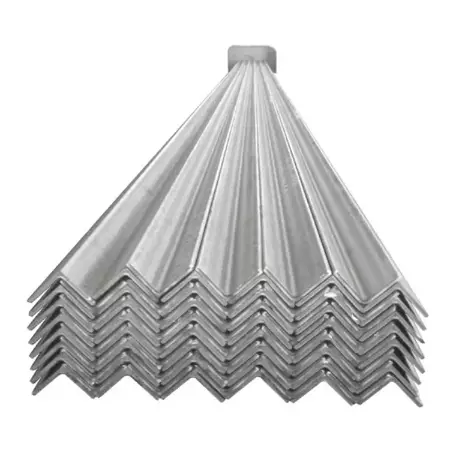Stainless steel angle bars are L-shaped structural components made from stainless steel, which is an iron-based alloy that includes a minimum of 10.5% chromium to provide exceptional corrosion resistance and durability.
Ingredients:
1. Chromium (Cr) - The main alloying element responsible for the material's stainless properties. It forms a passive oxide layer on the surface, preventing rust and corrosion.
2. Nickel (Ni) - Commonly added in austenitic grades (like 304 or 316) to enhance ductility, weldability, and improve corrosion resistance, especially against acidic and chloride-containing environments.
3. Molybdenum (Mo) - Found in some grades (e.g., 316), molybdenum increases resistance to pitting and crevice corrosion caused by chlorides and other aggressive substances.
4. Other elements - Depending on the specific grade, stainless steel angle bars may also contain carbon for strength, manganese for toughness, silicon for deoxidation, nitrogen for enhanced strength, and sometimes copper or titanium for specialized characteristics.
Uses:
- Construction: Stainless steel angle bars are used extensively in construction for bracing, framing, and reinforcing structures where high corrosion resistance is essential. This includes buildings near coastal areas, chemical plants, food processing facilities, and water treatment plants.
- Structural Applications: They serve as supports, brackets, and reinforcements in bridges, towers, and industrial structures due to their load-bearing capacity and resilience to harsh conditions.
- Fabrication: In manufacturing and fabrication industries, they're utilized for making frames, racks, ladders, platforms, and machinery bases, providing both strength and resistance to wear and tear.
- Mechanical Engineering: As components in conveyor systems, railings, and guardrails, thanks to their ability to withstand mechanical stress and maintain aesthetic appeal over time.
- Marine and Offshore: For shipbuilding and offshore platforms, where saltwater exposure requires high corrosion-resistant materials.
In summary, stainless steel angle bars offer a versatile solution for applications requiring a combination of structural integrity, corrosion resistance, and low maintenance, making them suitable for a broad range of uses across various industries.
Stainless steel has a smooth surface, high plasticity, toughness and mechanical strength, and is resistant to corrosion by acids, alkaline gases, solutions and other media. It is an alloy steel that does not rust easily, but not absolutely rust-free.Generally speaking, stainless steel may be subdivided into four basic families; Austenitic, Ferritic, Martensitic, and Percipitation Hardening.
| Product | Stainless Steel Angle |
| Grade | 200 series, 300 series, 400 series, 500 series, 600 series, 900 series. |
| Length | 6000 mm |
| Thickness | Customized |
| Form | Equal & Unequal |
| Surface | 2B etc. |
| Technology | Hot rolled & Cold rolled |
| Place of origin | Jiangsu, China |
| Type | Angel |
| Application | Construction,Kitchen industry etc. |
| MOQ | 1000kg |
| Port | Shanghai, Tianjing, Qingdao |




